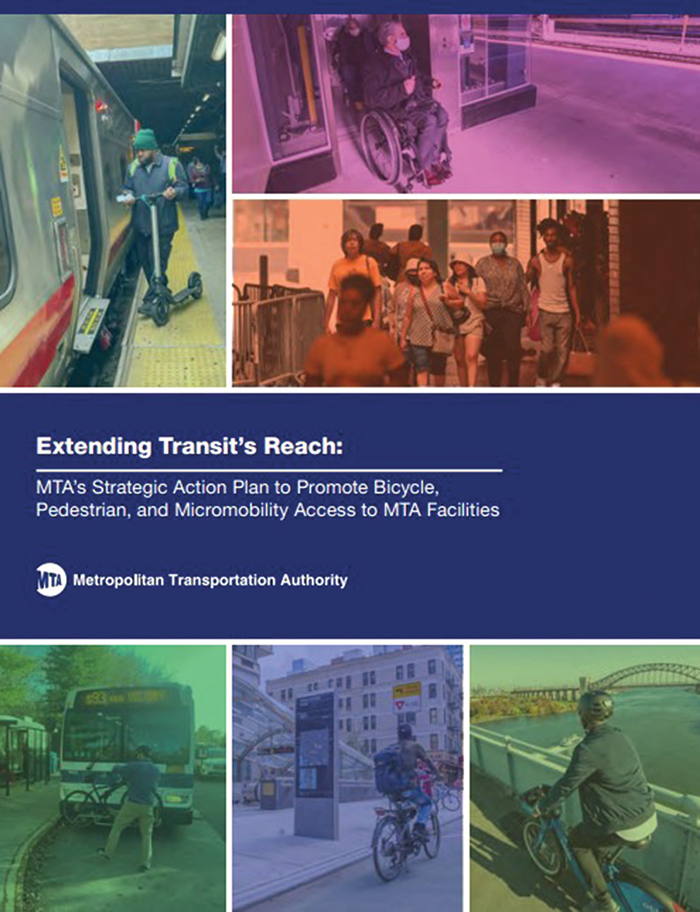Courtesy of MTA
The new policy fulfills one of the short-term goals established by Extending Transit’s Reach, the MTA’s Bicycle, Pedestrian, and Micromobility Strategic Action Plan issued in January.
By Michael V. Cusenza
The Metropolitan Transportation Authority (MTA) on Monday adopted a policy that allows the transport of personal electric vehicles (PEV) on MTA property and on board transit, with the exception of MTA express buses, and outlined the rules for safe transport.
This policy supports the State and City’s micromobility programs encouraging the use of personal vehicles such as bikes and scooters, particularly for first and last mile transportation, enhancing the transit experience by supporting multi-modal journeys and providing seamless integration. The policy will increase access to MTA transit by for people who do not live within walking distance from a transit station and fulfills one of the short-term goals established by Extending Transit’s Reach, the MTA’s Bicycle, Pedestrian, and Micromobility Strategic Action Plan issued in January.
The rules apply to all customers, MTA employees, contractors, consultants, and visitors. The specific procedures and policies in place concerning transport of bicycles for each respective agency apply to the transport of PEVs.
- Charging of PEVs in or on any MTA train, subway, bus, platform, station, facility, or terminal is prohibited
- Walk with it, don’t ride it
- If the PEV can be folded, it must be folded, or compacted and carried, except for on MTA express buses. Any form of PEVs, including foldable permissible PEVs, are prohibited inside MTA express buses.
- PEVs must remain powered off during transport
- Doors, seats, aisles and emergency equipment must be kept clear
- PEVs and their batteries must never be left unattended, discarded, stored, locked to any MTA asset within the system, or abandoned for any reason
- Cannot exceed 100 pounds in weight
- Must have a wheel diameter not exceeding 27 inches nor be more than 80 inches long or 48 inches high
- Hoverboards are not permitted in the system
- Must use batteries that are Underwriter Laboratory (UL) certified and listed
- Must not emit environmental contaminants
- Must not have damaged batteries
- Property of a shared or rented PEV provider (e.g., Citi Bike, Lime, Bird, Lynx, etc.) into the system is not allowed
These rules do not apply to mobility devices as defined under the Americans with Disabilities Act (ADA). MTA employees and customers should always give priority to people with disabilities. A PEV is defined as a device, not under Americans with Disabilities Act (ADA) governance, that transports and/or propels either an individual or property by means of electric or battery power, including fully electric and hybrid manual/electric devices.
“An accessible transit system that is reachable and convenient to use benefits all New Yorkers,” said NYC Transit President Richard Davey. “System accessibility is essential for all MTA riders and this policy allows riders in less well served areas to better connect with the transit system in a safe manner.”
However, some officials are not on-board with the new policy.
“The MTA’s decision is nothing short of irresponsible. Lithium-ion batteries can combust without being on the charger through a process called ‘self-discharge.’ It’s only a matter of time before this happens and somebody gets seriously hurt or worse,” said City Councilwoman Joann Ariola (R-Ozone Park), chairwoman of the Committee on Fire and Emergency Management.

